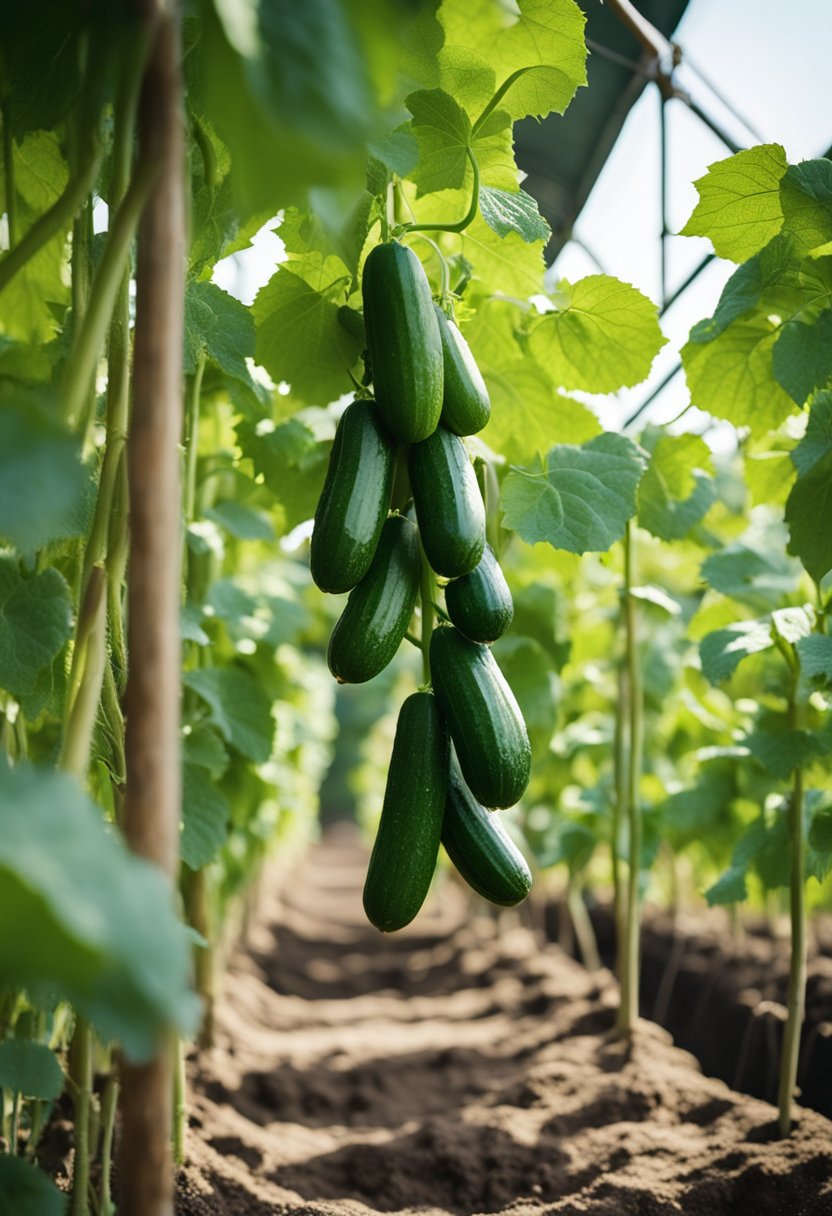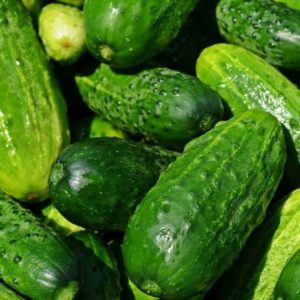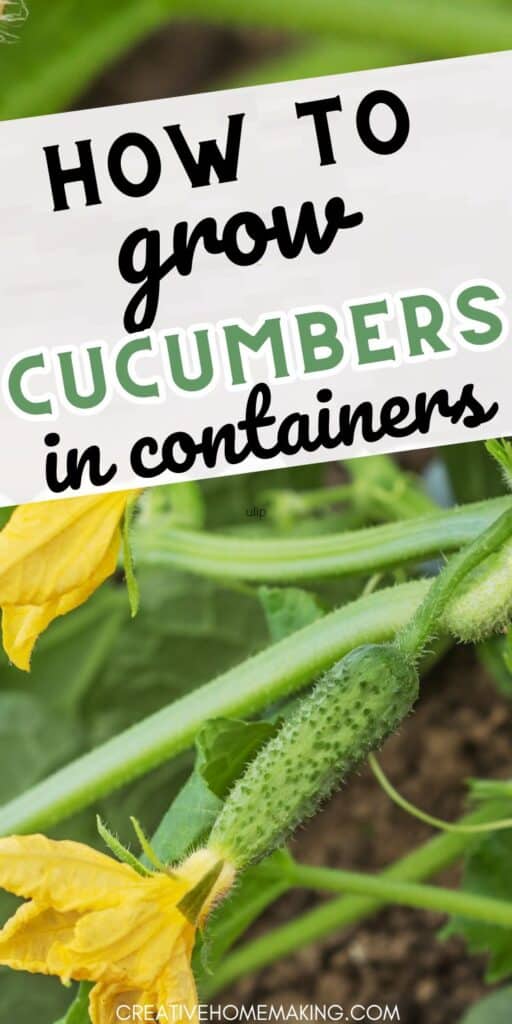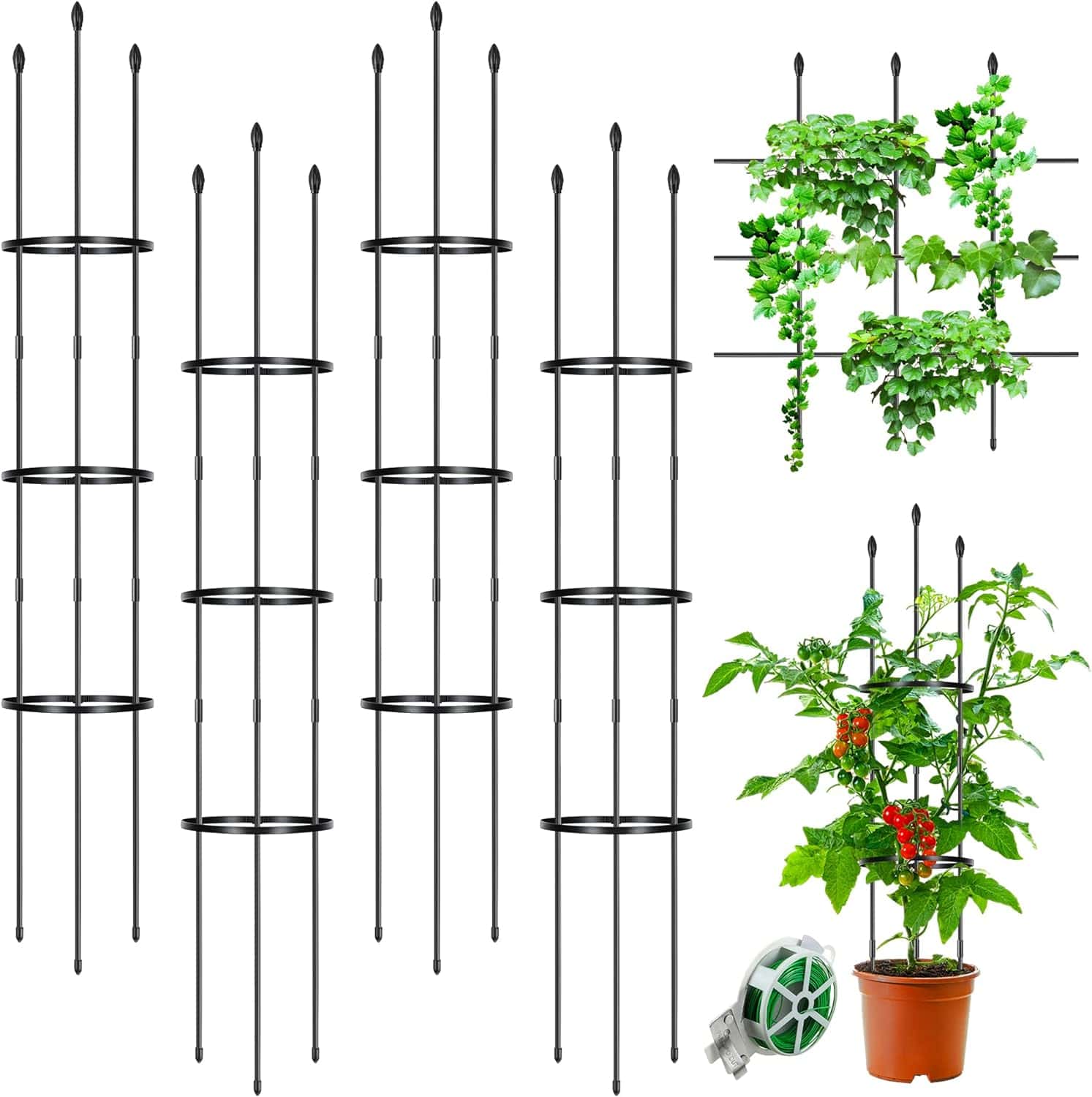Growing cucumbers in containers is a great way to enjoy fresh, homegrown produce even if you don’t have a lot of outdoor space.
This post may contain affiliate links.
Container gardening is also a good option if you want to avoid some of the common issues that can affect cucumbers when grown in the ground, such as soil-borne diseases and pests.
With the right container, soil, and care, you can have a bountiful cucumber harvest right on your balcony or patio.
Choosing the right container is key to success when growing cucumbers in containers. Cucumbers have deep roots, so it’s important to choose a container that is at least 12 inches deep.
The container should also be wide enough to accommodate the cucumber plant’s sprawling vines. Plastic or ceramic containers are good options, but make sure they have drainage holes to prevent water from accumulating in the soil.
When it comes to soil, choose a high-quality potting mix that is rich in organic matter and drains well.
Choosing the Right Container
Growing cucumbers in containers is a great way to enjoy fresh cucumbers even if you don’t have a garden. However, choosing the right container is crucial to ensure the success of your cucumber plants. Here are some things to consider when selecting a container for your cucumber plants.
Container Size and Material
Cucumber plants need ample space to grow and thrive. Therefore, it’s important to choose a container that is large enough to accommodate the plant’s root system. A container that is at least 12 inches deep and wide is ideal for growing cucumbers.
When it comes to container materials, there are several options to choose from. Plastic containers are lightweight and easy to move around, but they may not be as durable as other materials.
Terracotta pots are attractive and provide good drainage, but they can be heavy and may crack in freezing temperatures. Fabric containers are lightweight and allow for good air circulation, but they may not hold up as well over time.
Importance of Drainage Holes
Proper drainage is essential for growing cucumbers in containers. Without adequate drainage, the soil can become waterlogged, which can lead to root rot and other problems. Therefore, it’s important to choose a container with drainage holes in the bottom.
If you’re using a container that doesn’t have drainage holes, you can drill some holes in the bottom yourself. Just make sure to place a saucer or tray underneath the container to catch any excess water.
Overall, choosing the right container is an important first step in growing cucumbers in pots. By selecting a container that is the right size and material and has proper drainage, you can give your cucumber plants the best chance of success, whether you’re growing them on a patio, balcony, or deck.
Selecting Cucumber Varieties
When it comes to growing cucumbers in containers, selecting the right variety is crucial. There are several cucumber varieties to choose from, each with its own unique characteristics.
Related Article: What to Plant in May: A Guide to Spring Gardening

Bush Varieties
Bush varieties of cucumbers are compact and do not require trellising. These varieties are ideal for container gardening as they take up less space and are easier to manage. Some popular bush varieties include the Lemon, Salad Bush, and Bush Champion.
The Lemon cucumber is a small, round, yellow cucumber that is perfect for snacking or pickling. The Salad Bush cucumber produces crisp, juicy, and flavorful cucumbers that are great for salads.
The Bush Champion cucumber is a disease-resistant variety that produces high yields of straight, uniform cucumbers.
Vining Varieties
Vining cucumbers are known for their long, trailing vines that require trellising or support. These varieties are ideal for gardeners with larger containers or more space. Some popular vining varieties include the Slicing cucumber, Pickling cucumber, and Suyo Long.
The Slicing cucumber is a classic cucumber variety that produces long, straight, and smooth cucumbers that are great for slicing. The Pickling cucumber is a smaller variety that is ideal for making pickles.
The Suyo Long cucumber is a popular Asian variety that produces long, slender cucumbers with a sweet and crunchy taste.
Other popular varieties of cucumbers for container gardening include the Spacemaster, Diva, and Marketmore. The Spacemaster cucumber is a compact vining variety that produces high yields of straight, uniform cucumbers.
The Diva cucumber is a disease-resistant variety that produces crisp, sweet, and seedless cucumbers. The Marketmore cucumber is a classic vining variety that produces long, dark green cucumbers with a mild and refreshing taste.
When selecting cucumber varieties for container gardening, consider the space you have available, your personal preferences, and the growing conditions in your area.
With the right variety, you can enjoy a bountiful harvest of fresh, flavorful cucumbers right from your own container garden.
Soil and Fertilization
Preparing Potting Mix
When growing cucumbers in containers, it is important to use a high-quality potting soil that is well-draining and nutrient-rich.
A good potting mix should be able to hold moisture, yet allow excess water to drain out. It should also provide enough nutrients for the plants to grow healthy and strong.
To prepare the potting mix, start with a base of good-quality potting soil. Mix in some compost to provide organic matter and improve soil structure. You can also add some perlite or vermiculite to improve drainage and aeration.
Nutrient Requirements
Cucumbers require a balanced supply of nutrients to grow properly. They need nitrogen for strong foliage growth, phosphorus for root development, and potassium for flower and fruit production.
To fertilize your container-grown cucumbers, use an organic fertilizer that is high in nitrogen, phosphorus, and potassium. You can also use a balanced fertilizer with equal amounts of each nutrient.
It is important to monitor the pH level of the soil regularly, as cucumbers prefer a slightly acidic soil with a pH between 6.0 and 6.8. If the pH level is too high or too low, the plants may not be able to absorb the nutrients they need.
By using a high-quality potting mix and providing your cucumbers with the right balance of nutrients, you can ensure a healthy and productive harvest.
Planting and Supporting Cucumbers
Growing cucumbers in containers is an excellent way to enjoy fresh cucumbers without the need for a garden. However, planting and supporting cucumbers in containers requires a little bit of planning and preparation.
Sowing Seeds and Transplanting Seedlings
To start growing cucumbers in containers, you can either sow seeds directly into the container or transplant seedlings.
If you choose to sow seeds, make sure to use a good quality potting soil and sow the seeds at a depth of 1 inch. Keep the soil moist and warm, and the seeds should germinate in about 7-10 days.
If you choose to transplant seedlings, make sure to select healthy seedlings that are about 4-6 weeks old. Gently remove the seedlings from their original container and plant them in the container with the potting soil at the same depth they were growing in the original container.
Using Trellises and Supports
Cucumbers are vining plants and require support to grow vertically. A trellis or support system is essential for growing cucumbers in containers. There are several types of trellises and supports that you can use, such as stakes, netting, and trellises.
Stakes are the simplest and most affordable option. Simply insert a stake into the container and tie the cucumber plant to the stake as it grows. Netting is another option that works well for vining varieties. Attach the netting to the top of the container and guide the cucumber plant to grow up the netting.
Trellises are the most effective option for supporting cucumber plants. They provide ample vertical space for the plant to grow and can support multiple plants. To use a trellis, attach it to the top of the container and guide the cucumber plant to grow up the trellis.
Caring for Cucumber Plants
Growing cucumbers in containers is a great way to enjoy fresh, homegrown produce even if you have limited space. However, it is important to properly care for your cucumber plants to ensure a healthy and abundant harvest.
Watering and Sunlight
Cucumber plants require consistent moisture to thrive, but also need well-drained soil to prevent root rot. Water your plants deeply and regularly, aiming for about an inch of water per week. Be sure to water the soil and not the leaves to prevent fungal diseases.
Cucumbers also need plenty of sunlight, ideally at least six hours of full sun per day. If you live in a hot climate, provide some shade during the hottest part of the day to prevent sunscald.
Protecting from Pests and Diseases
Cucumber plants are susceptible to a variety of pests and diseases, including cucumber beetles, squash bugs, and bacterial wilt. To prevent infestations, keep the area around your plants clean and free of debris, and remove any infected plants immediately.
You can also protect your plants with row covers or insecticidal sprays, but be sure to use organic options if possible to avoid harmful chemicals.
To prevent soil-borne diseases, ensure that the soil temperature is warm enough for planting and use a well-draining potting mix with added sand or perlite. Adding mulch around the base of the plants can also help retain moisture and prevent soil-borne diseases.
Finally, fertilize your cucumber plants regularly with a liquid or organic fertilizer to promote healthy growth and fruit production. Follow the instructions on the fertilizer package and avoid over-fertilizing, which can lead to burned roots and poor plant health.

Frequently Asked Questions
What type of soil is best for growing cucumbers in containers?
Cucumbers thrive in well-draining soil that is rich in organic matter. A good potting mix that is specifically formulated for vegetables is ideal. Avoid using heavy or compacted soil as it can hinder proper root growth and lead to disease.
How often should cucumbers in pots be watered?
Cucumbers in containers need to be watered regularly to keep the soil moist. Depending on the weather conditions and the size of the container, watering may be required every day or every other day. It’s important to avoid overwatering, as this can lead to root rot and other issues.
What are the best cucumber varieties to grow in containers?
There are many cucumber varieties that are well-suited for container gardening, including ‘Bush Champion,’ ‘Patio Snacker,’ and ‘Spacemaster.’ These varieties are compact and produce high yields of delicious cucumbers.
How can I support cucumber plants in containers using trellises?
Cucumber plants benefit from support, especially when grown in containers. A trellis is an excellent way to provide support and keep the plants upright. You can use a bamboo stake or a metal trellis to support the plants as they grow.
Can cucumbers in containers thrive indoors, and if so, how?
Cucumbers can be grown indoors in containers, provided they receive sufficient light and warmth. A sunny windowsill or a grow light can provide the necessary light. It’s important to maintain a warm, humid environment to encourage healthy growth.
What are some effective companion plants for cucumbers in pots?
Companion planting is a great way to enhance the growth and health of your cucumber plants. Good companion plants for cucumbers include herbs like basil and dill, as well as other vegetables like tomatoes and peppers.
These plants can help repel pests and attract beneficial insects to the garden.
Follow my gardening board on Pinterest.





